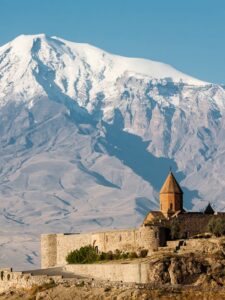Only in Armenia
Armenian Alphabet
It is hard to find a nation that reveres its writing system more than Armenians. In addition to its linguistic value, for Armenians, letters are also an artistic element used in everything from secret codes woven into carpets to brooches and picture frames. The Armenian alphabet is one of 14 living, independent and active alphabets in the world, used by around 10 million people. Few cultures can boast that they know the name and the authenticity of the person who created their alphabet. However, for the Armenians, this fact is documented and it is even possible to visit the place of his burial. The Armenian alphabet was created in 405 AD by Mesrop Mashtots and has remained unchanged for more than 1,600 years. Mesrop Mashtots was a scholar and a clergyman.
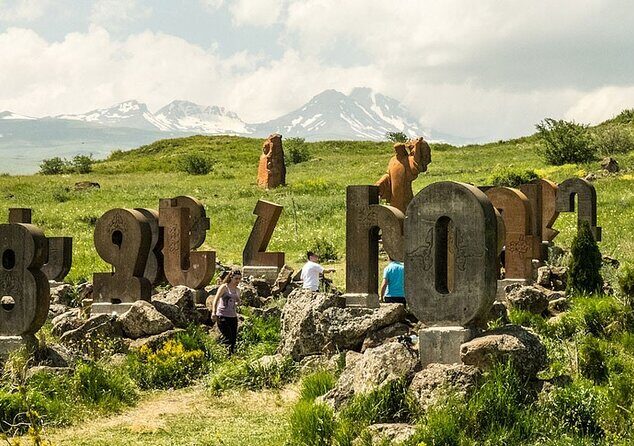
To unite the people around the church, it was necessary to conduct services and preach in the native language of the population, Armenian. This, in turn, meant translating the Bible and for this, a unique alphabet was needed. Initially, the Armenian alphabet consisted of 36 letters, but in the 11th century, due to the adoption of new foreign words, two additional letters were created: O and F. Additionally, a sign sounding like “ev” was introduced, which serves as a conjunction in a sentence and has no capital letter form. Thus, the Armenian alphabet today consists of 39 letters. Armenians write from left to right. The Armenian Apostolic Church canonized Mesrop Mashtots as a saint. The name of Mesrop Mashtots was also given to the Matenadaran, a research institute and museum that houses ancient manuscripts. In Armenia, there are two monuments of the Armenian alphabet: one in the village of Oshakan, at the church where Mesrop Mashtots himself is buried and the second near the slope of Mount Aragats (the highest mountain in Armenia).
Apricot – The Golden Fruit of Armenia
Armenia is a country distinguished not only by its ancient history, rich culture and traditions, but also by its unique nature, and the apricot is a true reflection of it. The apricot is the sweetest and most delicious fruit and is a symbol of Armenia. According to the legend, the apricot was one of the fruit trees that the patriarch Noah saved and hid on his ark to later revive it for people after the Great Flood. Armenia is the birthplace of apricot - the world’s oldest apricot seeds were discovered as evidence during archaeological excavations near the majestic Garni Temple. Armenian apricots are distinct from others and are rightfully considered the golden fruit of Armenia due to their wide variety, exquisite taste, orange-yellow color, health benefits and ability to treat various ailments. Crystal-clear mountain water, fertile soil and the bright rays of the sun are the essential conditions that Armenia has for growing apricots.

Currently, the Greeks call this fruit the “Armenian plum,” while the Italians call it the “Armenian apple.” The scientific name of the apricot is Prunus Armeniaca, which translates from Latin as “Armenian fruit.” Apricot exists on the level of a cult in Armenia. The golden fruit is used both fresh and preserved. Locals make compotes, jams, natural dried fruits, brandy and hooch. Moreover: apricot is also used in Armenian art to make the national musical instrument – the duduk, which is now known worldwide and has been included in the UNESCO list of Intangible Cultural Heritage. The golden fruit of Armenia can be tasted after a traditional blessing, which is also linked to the opening of the annual Armenian “Golden Apricot”, film festival usually held in July with the support of the Ministry of Culture of Armenia. It is impossible to imagine the indescribable taste of the Golden Fruit of Armenia without visiting this mysterious country!
Mount Ararat
Mount Ararat is the main symbol of all Armenians, a symbol of Armenian identity throughout all times. Ararat is a sacred mountain for all of humanity because, according to the Bible, it was here that Noah’s Ark came to rest, and it is from here that life began after the Great Flood. However, for Armenians, this mountain has a unique ethnic significance. It was in the Ararat mountain that the Armenian people originated thousands of years ago and it was here that the first Armenian statehood was established – the Kingdom of Ararat (9th century BC). Ararat is the actual homeland of the Armenian people and nowadays remains one of the unifying links for Armenians
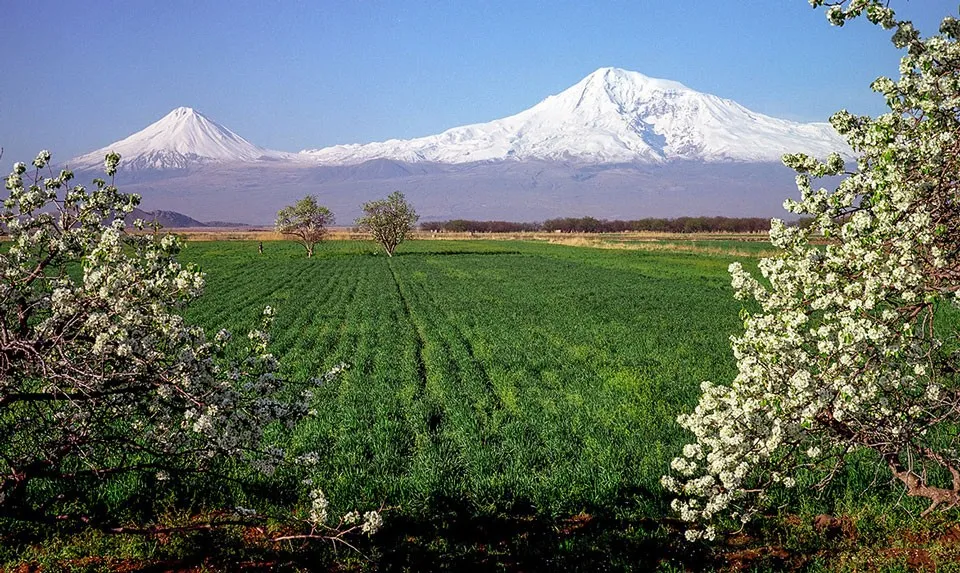
worldwide, regardless of where they live. For any Armenian, Ararat is a sacred and blessed mountain.
Ararat is a volcanic mountain complex consisting of two peaks, with heights of 5,165 meters (Greater Ararat or Masis) and 3,925 meters (Little Ararat or Sis).
Mount Ararat is an inactive volcano, with its last eruption occurring on July 2, 1840, which resulted in the destruction of the St. Jacob Monastery and the village of Akori. Since then, there have been no permanent settlements on the slopes of Ararat.
Interesting facts:
- As a result of unfortunate political games in the early 20th century, since 1920, the mountain has been located on Turkish territory. However, it can be seen from any point in Armenia.
- By the way, did you know that the famous image of Ararat with two peaks is visible only from the Armenian side? From the Turkish side, the mountain looks completely different and doesn’t have two clearly formed cones.
- The mountain was considered so sacred that in ancient times, according to local beliefs, even an attempt to ascend Mount Ararat was considered a step against God.
- A piece of Noah’s Ark is kept in the museum of St. Echmiadzin.
Calligraphy
Since ancient times, humanity has used stones for writing. Later, they were replaced by papyrus, which was replaced by paper. The art of handwritten writing began with the era of papyrus. Calligraphy is an art that is as delicate as music, outwardly transparent and clear, yet hidden inside are many layers of philosophy and worldview of a particular nation. In Armenia, calligraphy began to develop from the moment the Armenian alphabet was created (405 AD). It was created by the archimandrite of the Armenian Apostolic Church, Mesrop Mashtots, along with his students. Along with the fact that the Armenian language is a separate branch in the Indo-European family, Armenian calligraphy is a completely unique phenomenon and represents a whole science.
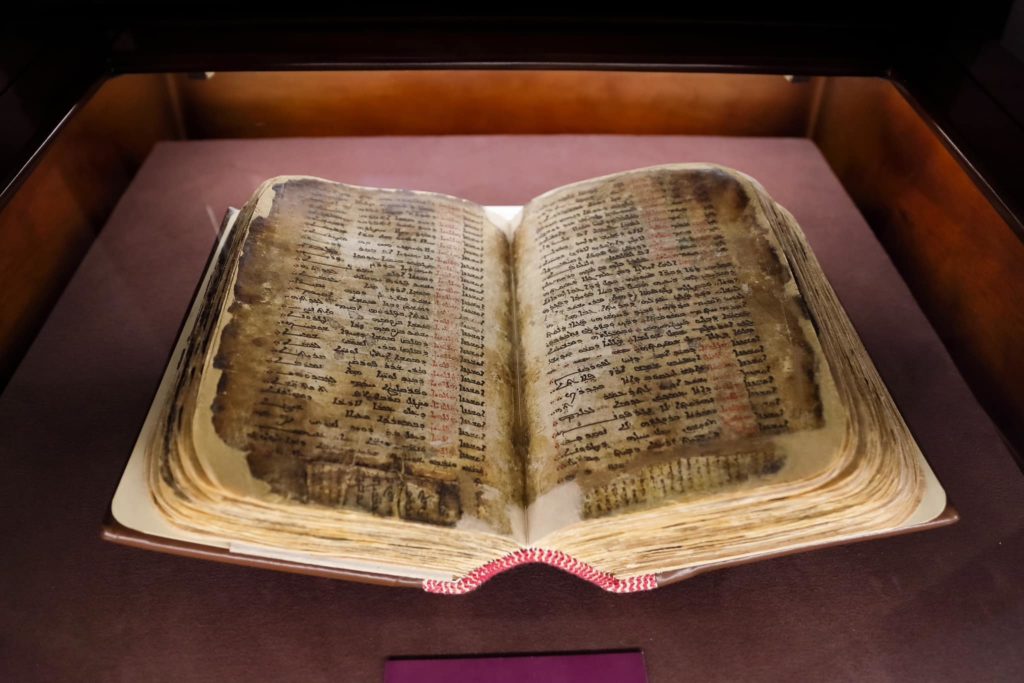
In the 12th century, the first illustrations to manuscripts appeared and starting from that time the art of miniatures was born. Armenian manuscript art features the following styles of letter design: “kendanagir” – letters in the shape of animals, “trchnagir” – letters in the shape of birds, “tsakhkagir” – letters in the shape of flowers. Armenian manuscripts are called “matyan” (magazine, book), which reflects the appearance of the manuscript. The paper in the manuscripts is thin, soft and light, and is valuable because it was polished and coated with wax on both sides, helping to retain the paint well. The main and first type of writing for Armenians was Erkatagir (literally, “iron writing”): large letters, straight, with elegantly rounded lines connecting the vertical elements of the letters or flowing out of them. There are about 10 variations of this writing style. In the 13th century, a new style appeared – Bolorgir (translated as “writing for all”), which had more delicate forms. “Shghagir” is a handwritten font that is rarely found in manuscripts and was primarily used for notes. It was precisely “Shghagir” that became the basis for modern handwritten script in Armenia. In the 17th and 18th centuries, “Notagir” was used, a writing style resembling musical notes, consisting mainly of small and slanted letters. Nowadays, about 30,000 ancient Armenian manuscripts have been preserved, stored in libraries across different countries of the world. The largest repositories are the Matenadaran in Yerevan (about 14,000), the library of the Armenian Patriarchate in Jerusalem (more than 4,000), the library of the Mekhitarist Congregation in Venice (about 5,000), and the Austrian National Library.
Armenia – The Cradle of Christianity
As the English poet George Byron, who conquered all of Europe with his genius, said, Armenia is the only country on Earth that is so rich in miracles and one of these miracles is its Christianity. Armenia rightfully holds the title of the cradle of Christianity – it was in this country that Christianity was established as the sole, official, state religion in 301 AD, thus making Armenia the first Christian state. Many Armenian and Assyrian sources mention the Armenian King Abgar, who, being ill, believed in Christ and wrote him a letter asking for help. In his reply, Jesus Christ promised to send one of his apostles to heal him and thus two of the twelve apostles – Thaddeus and Bartholomew – came to Armenia to heal the king and baptize the people, bringing with them a portrait of Saint Mary, the spear of Longinus and holy
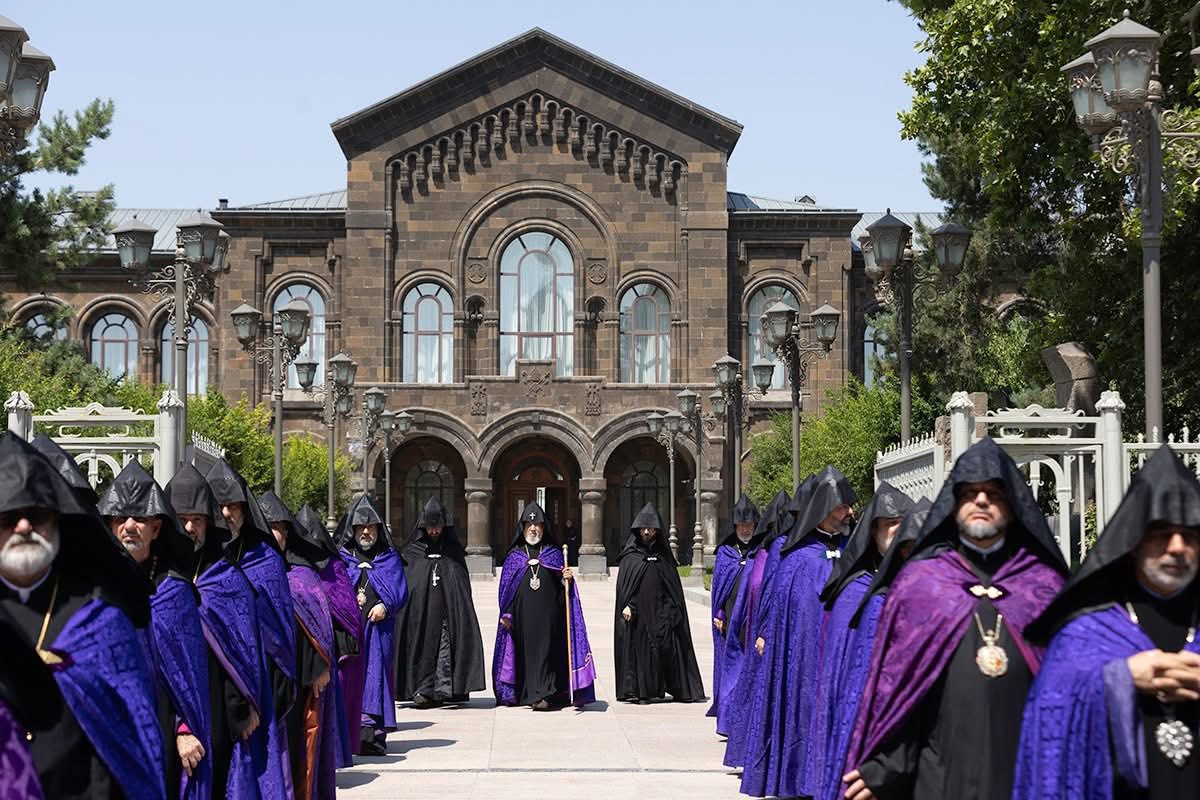
myrrh. the spear of Longinus and holy myrrh. Thanks to two apostles, Armenia became Christian and the Armenian Church was officially called the Armenian Apostolic Church. Starting from its formation up to present, the Armenian Apostolic Church has never depended on or been part of either the Catholic or Eastern Orthodox Churches, existing independently with its own Patriarch (Catholicos) at its head. In 301-303 AD, the Etchmiadzin Cathedral was founded – the main sanctuary and place of pilgrimage for all Armenians. It is the oldest official and functioning Christian church in the world and the spiritual center of the Armenian people. The Christianity is priceless for the Armenian people. It has played an important role in the protection and preservation of the Armenian people, in their unity; it has influenced Armenian culture, national consciousness, and unity and of course, all Armenians, sometimes with pride, tell everyone about the cradle of the very faith of which they have been a part for 1700 years. Trace the entire journey and process of the formation of the cradle of Christianity by visiting the land of grandeur and antiquity!
Armenian Cognac
Cognac rightfully holds a place as one of the symbols of Armenia and the pride of every Armenian. According to all global cognac experts, Armenian cognac is today the main competitor of French cognac in the international market. The cognac history in Armenia began in 1887, when merchant Nerses Tairyan started cognac production on the territory of the former Yerevan Fortress. Cognac was produced according to the French technology. After the revolution, the factory was nationalized and renamed "ARARAT." In 1953, a second building was constructed, which is now known as the "Yerevan Brandy Factory." The uniqueness of Armenian cognac lies in the fact that, unlike their French counterparts, Armenians use spring water instead of distilled one and each factory has its own assigned spring sources,

from which water is brought to the production. So what do Armenians produce: brandy or cognac?
At the 1900 World’s Fair in Paris, Armenian brandy “Shustov” was the only one to officially receive the right to be called cognac when it was awarded the highest prize, as during a blind tasting, none of the judges could tell the difference between Armenian and French cognac. Thus, until the early 2000s, Armenian cognac was called cognac. However, the European Union introduced new regulations regarding the use of product names, requiring products to be named based on their place of production.
By the way, did you know that:
- Churchill was a great admirer of Armenian cognac and drank a bottle of “Dvin” daily.
- ARARAT cognac became the first alcoholic beverage to be in space. This was revealed after cosmonaut Georgy Grechko admitted that they secretly carried cognac on board.
- The great marine painter Aivazovsky, cousin of Tairyan, contributed to the construction of the first distillery workshop and to the establishment of cognac production in Armenia.
- Maxim Gorky was also a great admirer of Armenian cognac. When he visited the cognac factory in Yerevan in 1928, Gorky uttered a phrase that later became popular: “And yet, it is easier to climb to the top of Ararat than to leave the cellars of ARARAT.”
- The portion of alcohol that evaporates through the surface of oak barrels is called the “Angels’ Share”․
Armenian Duduk
The duduk is an Armenian wind instrument that Armenians have been playing for 3,000 years. The historical name of the duduk is "tsiranapogh" (literally "apricot pipe"). This name was mentioned in his notes by the 5th century Armenian historian Movses Khorenatsi. Therefore, it is easy to conclude that the Armenian duduk is made of apricot wood. Only the apricot wood can resonate so softly that the music becomes more like the voice timbre than instrumental music. The duduk is one of the symbols of Armenia, the sounds of which are a connecting bridge between Ancient and Modern Armenia. The sounds of the duduk make you feel and go through the path that Armenians have taken throughout their history.

In 2005, UNESCO recognized the duduk as the oldest Armenian musical instrument and included it in its World Intangible Cultural Heritage List for its authenticity and uniqueness. The duduk consists of two removable parts: a reed and a pipe. Great masters around the world have tried to make duduk from other types of wood: plum, pear, apple, walnut and even bone. However, only apricot is capable of giving the duduk its unique velvety timbre. In the classic version, the duduk is played in a duet – one is the leader and the second holds one note. The leader is the musician playing the melody, and the second musician is called “dam-duduk” or “damkash”, that is, the musician continuously holding one note, so the main melody plays. One of the most famous duduk players is the musician and composer Jivan Gasparyan, nicknamed the master of the duduk. Jivan Gasparyan is the author and performer of the soundtracks of many Hollywood films.
Interesting facts:
- The “Duduk” class was included in the curriculum of the Yerevan State Conservatory relatively recently, but has already managed to graduate many professional, certified duduk players.
- The duduk is usually played by men (there are only 3 women duduk players)
- The duduk is the only musical instrument of Western Asia around whose nationality there has never been any dispute: all the nations of this region agree that it is an Armenian instrument.
Khachkar (Cross-stone)
Khachkar (stone in the shape of a cross) is an integral part of Armenian culture, which originated in the territory of Armenia in the 4th century, immediately after the official Christianization, and thus is a unique element of this culture and is practiced only in Armenia. The word is formed from two words: "khach" - "cross" and "kar" - "stone". Externally, it is a stone stele with a carved image of a cross. Even at that time, there were strict rules and technology for the construction of khachkars: a hole was gouged out in the base, a horizontal stone block, into which a slab with an inscription and pattern already applied to it was vertically inserted. Khachkars are made of basalt, which is extremely resistant to destruction, or of tuff, since tuff is easy to process.
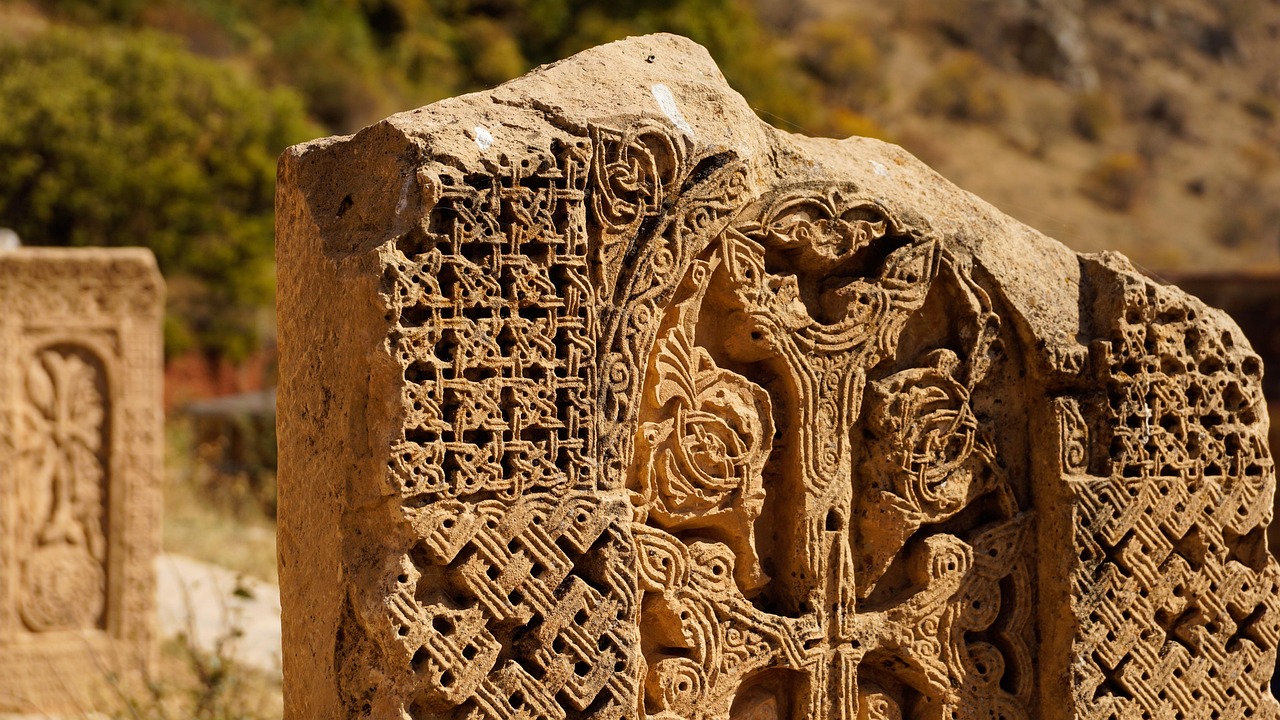
The main symbol of khachkars is a cross. However, in addition to the main figure – the cross, representing the tree of life, khachkars are often richly decorated with patterns in the form of knots that form geometric figures. They usually fill the entire surface of the monument with a complex and intricate pattern. These decorations have neither a beginning nor an end. This is done deliberately, as they symbolize eternity. Along with abstract images, khachkars are also decorated with plant motifs of grapes, pomegranates, animals and rarely saints. “Winged crosses” are also characteristic of traditional khachkars: two wings rise like a flame from a round shape called a rosette, carved under the cross. Each khachkar has a special motif and name and is dedicated to something. Khachkars are located throughout the Armenian Highlands and historical Armenia (modern Turkey, Georgia and Azerbaijan). It is believed that the oldest khachkar (879), called Katramide, is located in Garni, Armenia, and the oldest khachkars in Artsakh date back to 853 and 866. In November 2010, the art of creating khachkars was included in the UNESCO List of Intangible Cultural Heritage of Humanity (“Symbolism and Craftsmanship of Khachkars, Armenian Stone Crosses”).
Interesting facts:
- All khachkars are unique: the ornament is never repeated.
- Khachkars often served as tombstones for the salvation of the souls of the deceased.
- Khachkars, wherever they are located and erected, always face the west, so you will never get lost if there is a Khachkar nearby․
Armenian Khazes
The Armenian people are one of the oldest in the world, which was formed on the territory of the Armenian Highlands and continue to live and prosper here. Since ancient times, Armenians have contributed not only to world architecture, literature, art, but also achieved significant success in creating their own musical notes, which, in turn, influenced the formation of the musical characteristics of other nations. Starting from the seventh century, thanks to the works of the great musician, poet and theologian Stepanos Syunetsi, the Armenian system of notes - khazes, widespread in medieval Armenia, was created.
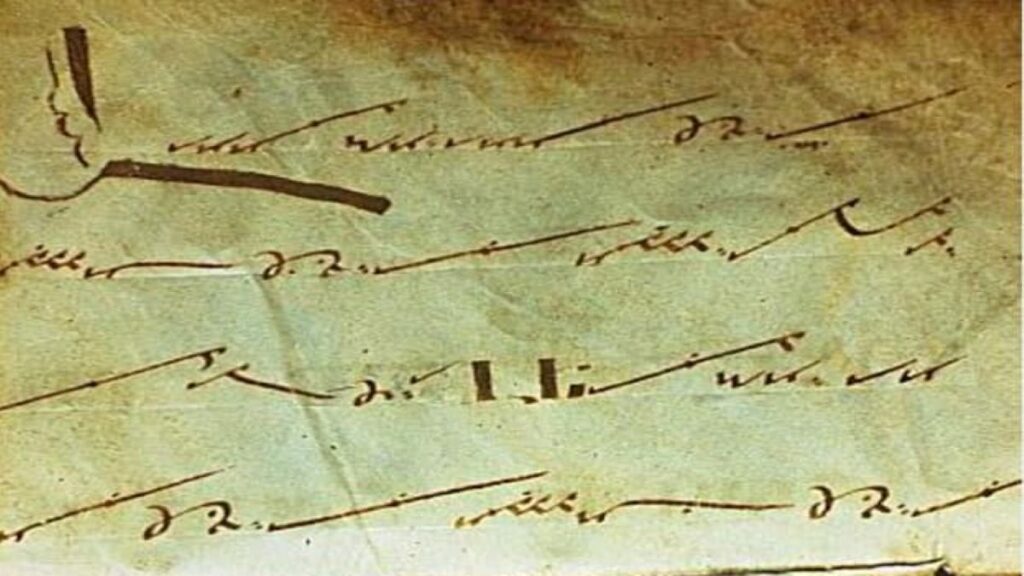
Armenian khazes denoted the methods and dynamics of performance, a clear scheme of melodies and the ability to lower and raise the sound. After the Italian notation (the notation used today by the whole world) was perfected in the 17th century, which turned out to be the most universal, the Armenians gradually switched to the generally accepted notation system. Unfortunately, the key to the ancient Armenian notation was lost over time. At the turn of the nineteenth century, the Armenian notation was studied and partially deciphered by the brilliant Armenian composer and musicologist Komitas. But the deciphering process could not be completed, as the Armenian Genocide prevented this work, of which Komitas himself became a victim, and as a result, most of his works were lost. Today, hundreds of medieval books and manuscripts have reached us, which contain various Armenian khazes. Most of them are kept in one of the oldest repositories of manuscripts in the world – the Institute of Ancient Manuscripts – in Matenadaran, visiting which you can get to know the Armenian mystical khazes better and try to unravel their true purpose.
Armenia – the cradle of civilization
Armenia is a country that is distinguished by its rich culture and history, which at the genetic level has its own clear purpose and mission stimulating the development of all mankind, a country that is always able to give the World something new. Probably for these reasons, many ancient nations have always considered Armenia the cradle of civilization. Almost all sources of ancient civilizations considered Armenia (the Ararat Valley) the cradle of mankind and have repeatedly documented this fact in their sources. It is worth paying attention to the most ancient chronicles that were created over many millennia in different parts of the planet. According to the Bible (Old and New Testaments) – the sacred scripture that Christians, Muslims, Jews and other Abrahamic religions consider the most truthful
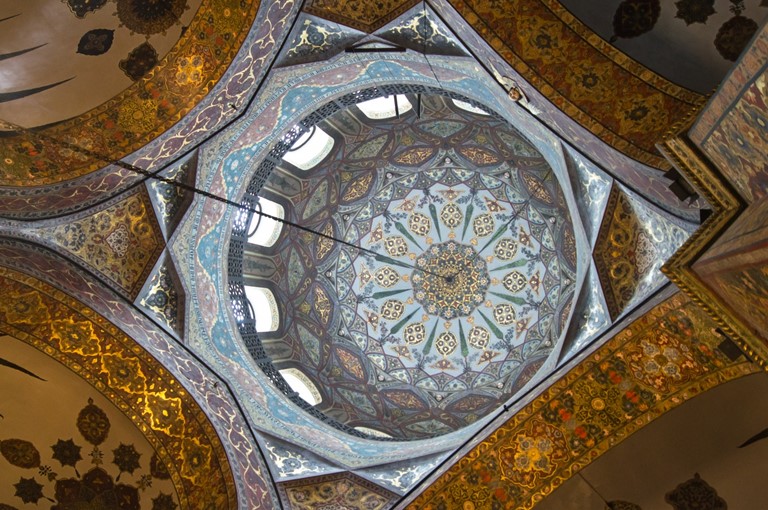
scripture describing existence, mankind originated in the Ararat Valley after the Great Flood, when Noah’s Ark came to rest on Mount Ararat. There is an Armenian legend, which is described in detail in the works of the 5th century Armenian historian Movses Khorenatsi. According to his version, the forefather of the Armenian people was Hayk Nahapet (Patriarch), who, according to many scientists, is the same Patriarch Noah (with an Armenian name). There are a number of equivalent legends that are not of Armenian origin: many of them were created by Greek, Georgian, Persian, and Arabic authors. According to the Greek legend, which was written by the Greek historian Strabo based on information received from the generals of Alexander of Macedon, the forefather of the Armenian people was the Argonaut Armenos Teselian, whose ancestors ended up in Greece after the Flood. Georgians believe that all nations appeared from the sons of Torgom, who was one of the grandsons of Patriarch Noah. From the Georgian point of view, Armenians originated from Ayos, Georgians – from Kartlos (sons of Torgom). The Arab legend says that all mankind descended from three sons of Noah: Avmar, Lantar and Armini, and from the latter – the Armenian people themselves. Despite the fact that debates and disputes about which of the above versions is true are endless, it is difficult to refute the fact that this land is considered the cradle of the human race and undoubtedly, while visiting this amazing and fertile land, you will get acquainted with the centuries-old history and rich culture, which is distinguished by its customs, traditions and rich natural heritage.


